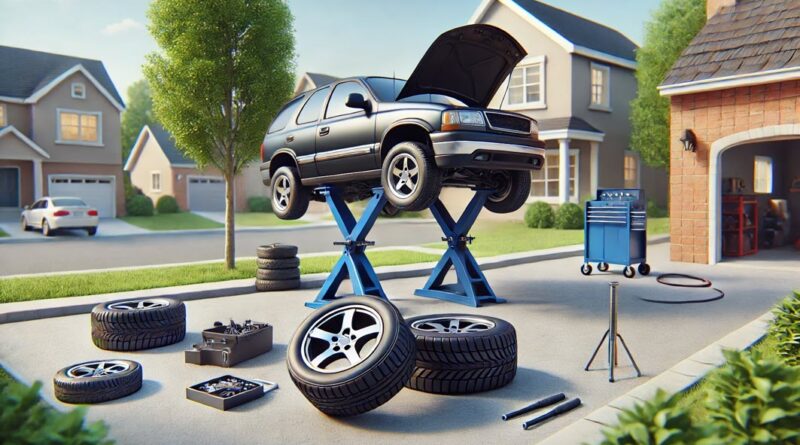How to Rotate Your Tires at Home (If You’ve Never Done It Before)
Rotating your tires might sound like a job for a garage, but it’s actually something you can do yourself — right at home. It doesn’t take fancy tools or expert skills, just a little time and a few basics. Plus, it can save you money and keep your car driving smoother for longer.
Here’s a simple, no-nonsense guide to help you rotate your tires at home.
Why Bother Rotating Your Tires?
Tires don’t wear out evenly. The front ones usually wear faster because they do more of the work — like steering, turning, and taking on the weight when you brake. Rotating them means swapping their positions so they wear more evenly over time.
The benefits?
- Your tires last longer
- You get better handling and grip
- Your car might even get better fuel economy
- And you might catch any problems before they get serious
How Often Should You Rotate Your Tires?
A good rule of thumb: every 5,000 to 8,000 miles, or about every 6 months. If you’re already getting your oil changed, that’s a great time to rotate the tires too. Also, anytime you’re switching from winter to summer tires (or vice versa), throw in a rotation.
What You’ll Need
You don’t need a professional setup — just a few tools:
- A car jack (a floor jack makes it easier)
- Jack stands (safety first — never trust just the jack)
- A lug wrench or impact wrench
- Wheel chocks (blocks to stop your car from rolling)
- Your car manual (for the right rotation pattern)
Step-by-Step: How to Rotate Your Tires
1. Park Somewhere Safe
Find a flat spot like a driveway or garage floor. Put the car in park (or in gear for manual), use the parking brake, and wedge chocks behind the wheels to stop any rolling.
2. Loosen the Lug Nuts (But Don’t Remove Them Yet)
Use your wrench to slightly loosen the nuts on all four wheels. Just enough to break them loose — it’s easier while the car’s still on the ground.
3. Jack Up the Car and Add Jack Stands
Lift the car using the jack and place jack stands underneath for safety. Once the stands are in place, slowly lower the car so it rests on them securely.
4. Take Off the Tires
Now fully unscrew the lug nuts and remove the wheels. Keep the nuts in a safe spot — they love to roll away.
5. Rotate the Tires Based on Your Car Type
This is the key part. The pattern you use depends on whether your car is front-wheel, rear-wheel, or all-wheel drive:
- Front-wheel drive (FWD): Front tires go straight to the back. Rear tires go to the front, but switch sides.
- Rear-wheel drive (RWD): Rear tires go straight to the front. Front tires go to the back, but switch sides.
- All-wheel drive (AWD): Do a full criss-cross. Front left goes to rear right, rear left goes to front right, and so on.
👉 Important: If your tires are “directional” (made to roll in one direction only), don’t criss-cross. Just swap front to back on the same side.
6. Put the Tires Back On
Mount the tires in their new spots. Hand-tighten the lug nuts in a star pattern — this helps the wheel sit evenly.
7. Lower the Car and Tighten Everything Properly
Carefully take the car off the jack stands and lower it to the ground. Then, use a torque wrench (if you have one) to tighten the nuts to the correct specs. You’ll find the recommended torque in your car’s manual.
Don’t Forget: Check Tire Pressure
After rotating, check the air pressure in each tire. The front and rear may need different amounts, and the pressure could’ve changed while the tires were off.
Final Thoughts
Rotating your tires at home might seem intimidating at first, but once you do it once or twice, it’s no big deal. It’s a great way to take care of your car, save money, and feel a little more confident about DIY car maintenance.
So next time you’re thinking about taking your car in for something simple, why not grab a wrench and take care of your tires yourself?
Buying a used VW. Buying used vauxhall, BMW, Jaguar, Ford, Volvo, Range rover, Bentley, Aston Martin, Porsche, Ferrari, Lamborghini, Maserati, Hyundai, Tesla, Honda, Pagani

